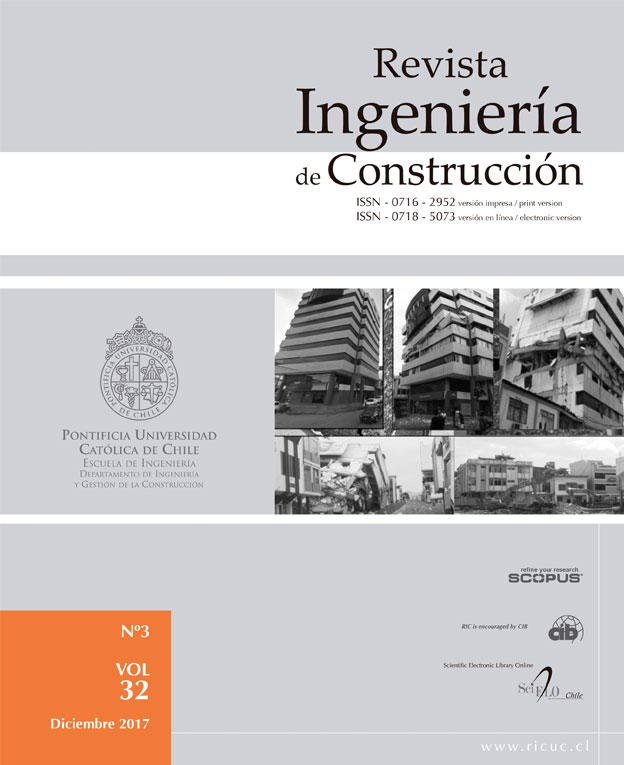Seismic analysis of stairs with three models using the spectral and the capacity spectrum methods, give access to a building with seismic isolators
DOI:
https://doi.org/10.4067/S0718-50732017000300113Keywords:
Método espectral, método del espectro de capacidad, aisladores sísmicos, gradas de accesoAbstract
At the Universidad de las Fuerzas Armadas - ESPE, in Ecuador, different structural blocks with and without seismic isolators of triple friction pendulum are being built. In one of them, the access stairs to the floors is located in a Structural Block with no seismic isolators; therefore, it has special construction details to allow a free displacement of the Isolators’ Building without impacting the Stairs’ Building at all. This paper addresses these details. On the other hand, three models (each with different degrees of freedom) for seismic analyses of a longitudinal frame and a transversal frame are shown. The results were obtained and compared using the Spectral Method and the Capacity Spectrum Method. Moreover, these results highlight the importance of appropriately selecting the numerical calculation model. Later on, the seismic analysis of the Structural Block of the Access Stairs is shown, using a three-phase constitutive model.


